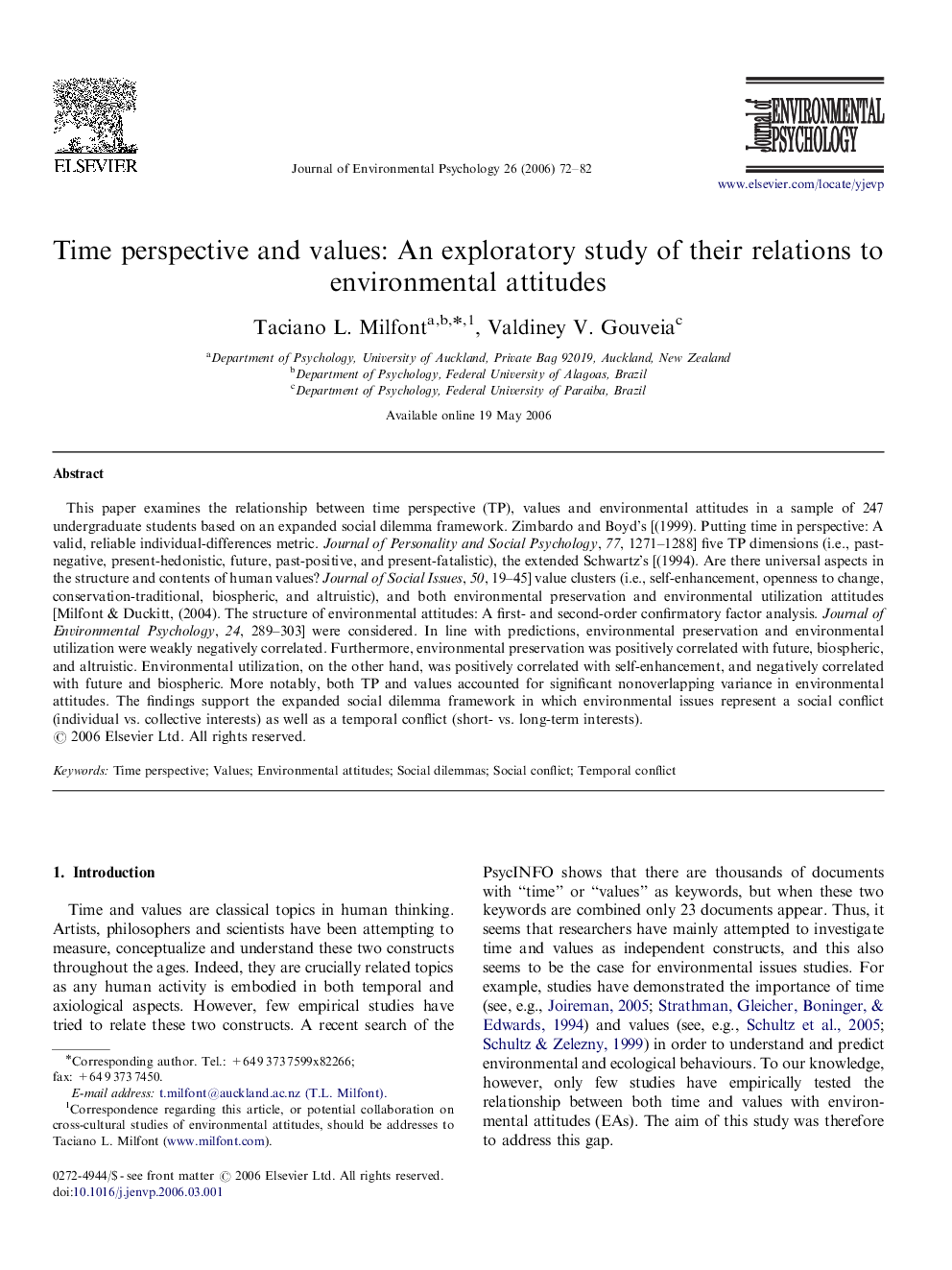| Article ID | Journal | Published Year | Pages | File Type |
|---|---|---|---|---|
| 885886 | Journal of Environmental Psychology | 2006 | 11 Pages |
This paper examines the relationship between time perspective (TP), values and environmental attitudes in a sample of 247 undergraduate students based on an expanded social dilemma framework. Zimbardo and Boyd's [(1999). Putting time in perspective: A valid, reliable individual-differences metric. Journal of Personality and Social Psychology, 77, 1271–1288] five TP dimensions (i.e., past-negative, present-hedonistic, future, past-positive, and present-fatalistic), the extended Schwartz's [(1994). Are there universal aspects in the structure and contents of human values? Journal of Social Issues, 50, 19–45] value clusters (i.e., self-enhancement, openness to change, conservation-traditional, biospheric, and altruistic), and both environmental preservation and environmental utilization attitudes [Milfont & Duckitt, (2004). The structure of environmental attitudes: A first- and second-order confirmatory factor analysis. Journal of Environmental Psychology, 24, 289–303] were considered. In line with predictions, environmental preservation and environmental utilization were weakly negatively correlated. Furthermore, environmental preservation was positively correlated with future, biospheric, and altruistic. Environmental utilization, on the other hand, was positively correlated with self-enhancement, and negatively correlated with future and biospheric. More notably, both TP and values accounted for significant nonoverlapping variance in environmental attitudes. The findings support the expanded social dilemma framework in which environmental issues represent a social conflict (individual vs. collective interests) as well as a temporal conflict (short- vs. long-term interests).
